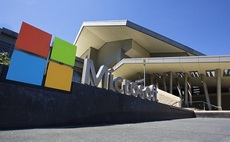Stripped down Windows Server containers to encourage organisations to develop cloud apps on Windows instead of Linux
Microsoft has confirmed plans to include "Nano Server" technology into the forthcoming Windows Server 2016 - although the technology will not make it into the preview coming out in May. Plans fo...
To continue reading this article...
Join Computing
- Unlimited access to real-time news, analysis and opinion from the technology industry
- Receive important and breaking news in our daily newsletter
- Be the first to hear about our events and awards programmes
- Join live member only interviews with IT leaders at the ‘IT Lounge’; your chance to ask your burning tech questions and have them answered
- Access to the Computing Delta hub providing market intelligence and research
- Receive our members-only newsletter with exclusive opinion pieces from senior IT Leaders





















